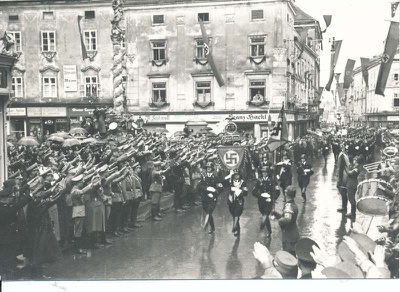 Stadtarchiv St.Pölten
Stadtarchiv St.Pölten
This project investigates the history of St. Pölten during the National Socialist era.
Funding
Stadtgemeinde St.Pölten, Kulturabteilung
Duration
January 2022 - December 2023
Project Leader
Cooperation Partner
Institute for Jewish History in Austria (INJÖST)
Description
During the Nazi era, St.Pölten was not only the largest city of the "Reichsgau Niederdonau", but also played a central role as a "Gauwirtschaftsstadt". In addition to its function as a transportation hub with the railroad workshops, it also housed (strategical) important industries.
The National Socialists could look back on early roots in St.Pölten. After 1934, the Sturmabteilung (SA) in particular profited from the break into the formerly Social Democratic-dominated working class. The railroad workers from the now Czech Wielands (Česke Velenice) who had settled in St.Pölten in 1919/20 also formed a stable NS potential alongside the German nationalist bourgeoisie. However, the support was countered by a considerable amount of resistance from the working class, but also from (political) Catholicism in the bishop's town. The project pays just as much attention to the party, the SA, and the repressive apparatus (police, Gestapo) as to the resistance, but also to the Jews and Roma and Sinti persecuted on "racial" grounds.